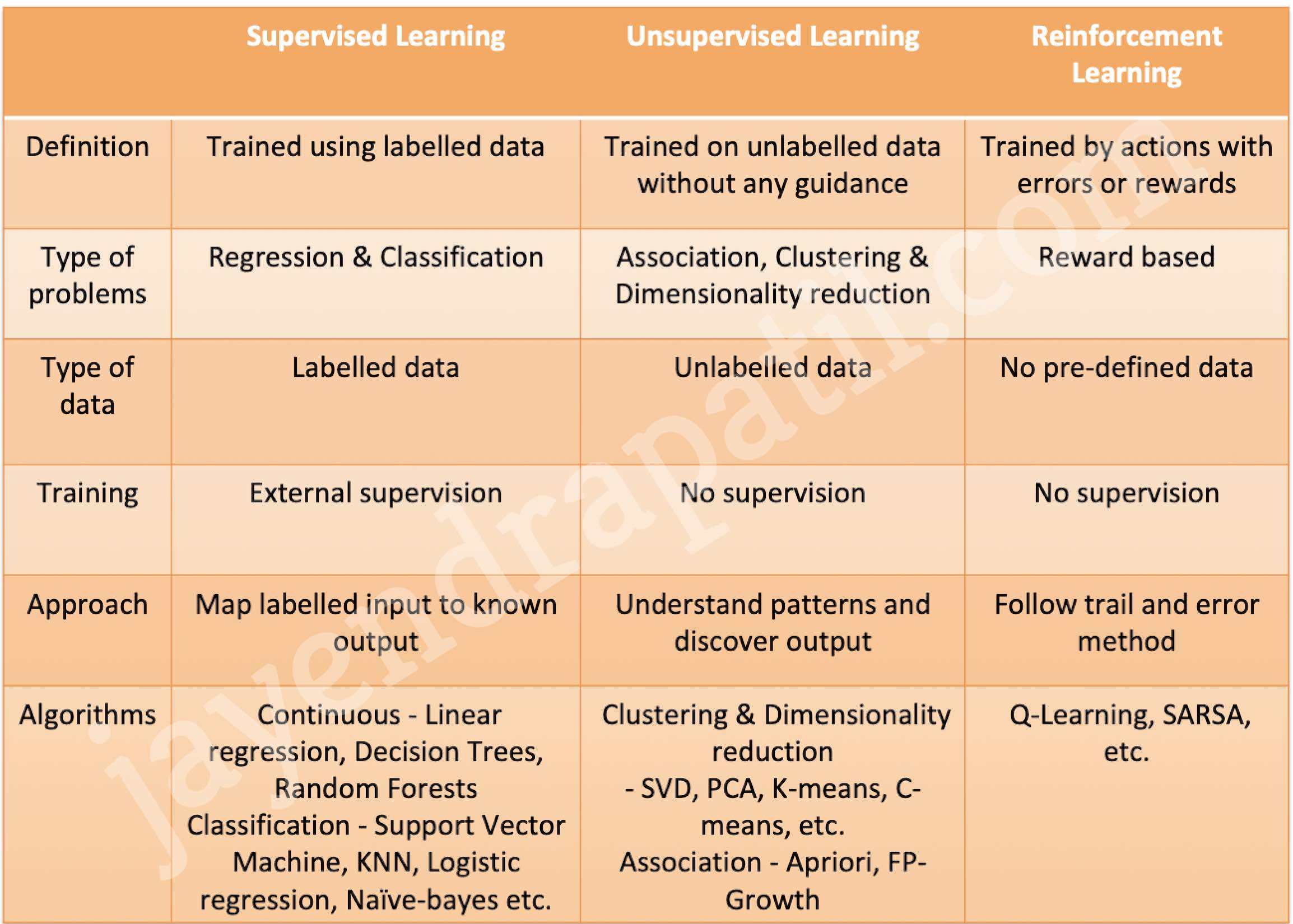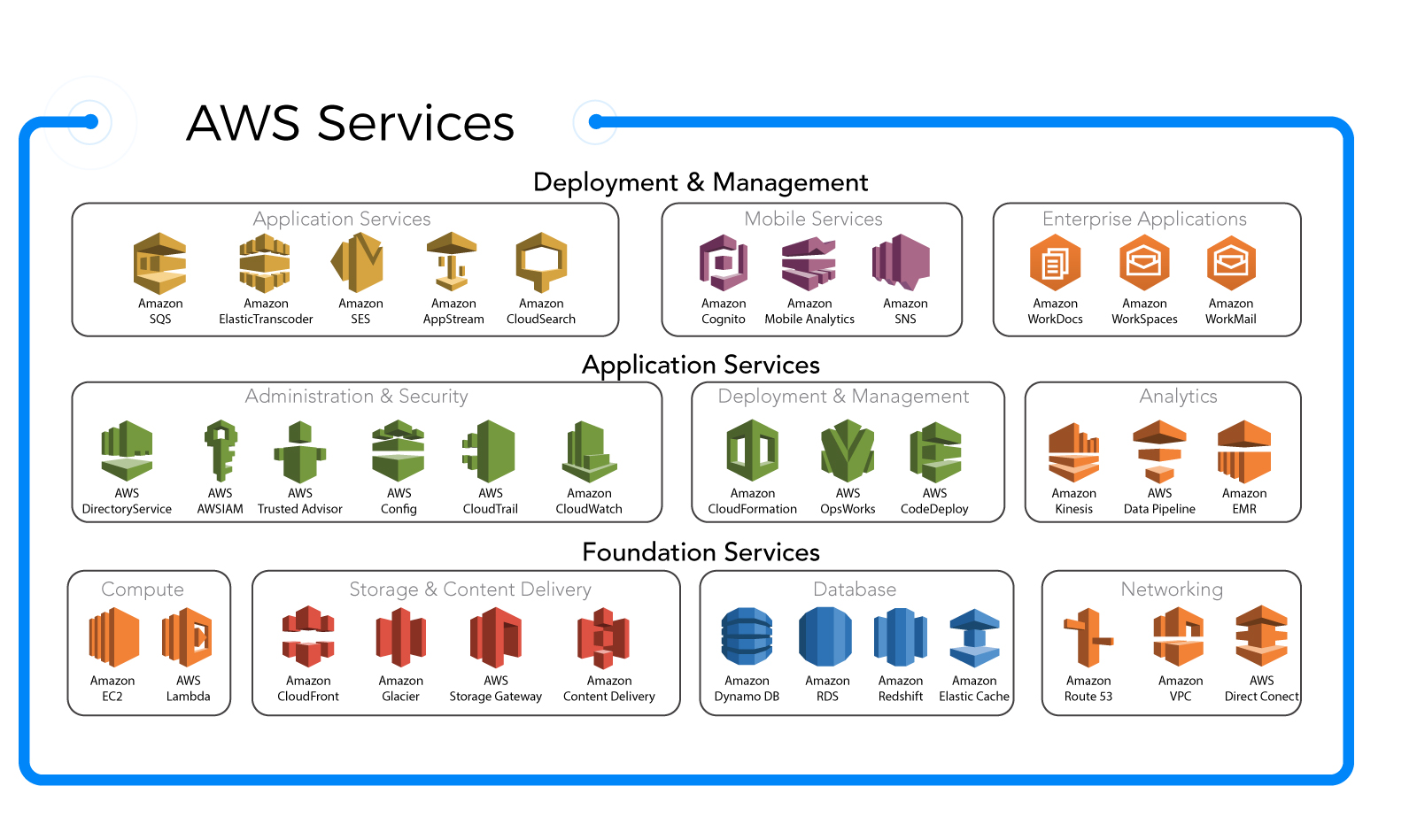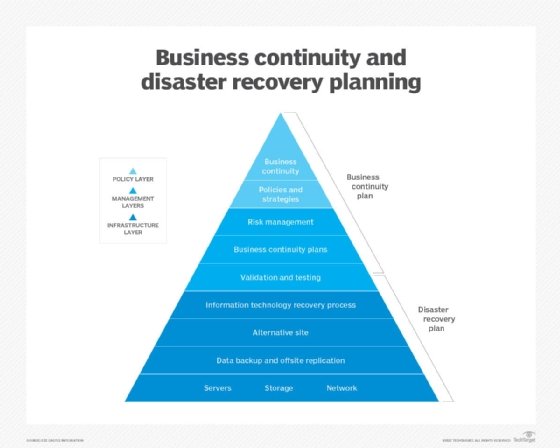Understanding AWS: An Overview of Amazon Web Services
Amazon Web Services (AWS) is a versatile and feature-rich cloud computing platform that offers a diverse range of services to businesses of all sizes. These services encompass computing power, data storage, databases, content delivery, and much more. By leveraging AWS, businesses can enjoy the benefits of flexibility, scalability, and enhanced security, making it an ideal choice for various use cases.
AWS provides a multitude of tools and features that cater to different business needs, from small startups to large enterprises. Its offerings include on-demand computing resources, which enable businesses to scale their operations up or down as required, thereby optimizing costs and resources. Additionally, AWS ensures robust data security through encryption, access control, and compliance with various industry standards, making it a trusted choice for businesses seeking to safeguard their digital assets.
One of the key advantages of AWS is its ability to facilitate seamless integration with existing IT infrastructure, allowing businesses to migrate their applications and data to the cloud with minimal disruption. Furthermore, AWS offers a pay-as-you-go pricing model, ensuring that businesses only pay for the services they use, without incurring unnecessary costs. By harnessing the power of AWS, businesses can unlock new opportunities for growth, innovation, and competitive advantage.
AWS for Data Storage and Backup: A Secure and Scalable Solution
Amazon Web Services (AWS) provides secure and scalable data storage solutions that cater to various business needs. Among its extensive offerings are Amazon S3, Amazon EBS, and Amazon Glacier, which enable businesses to store, manage, and access their data with ease and flexibility. By utilizing AWS for data storage and backup, businesses can benefit from enhanced security, cost savings, and improved disaster recovery capabilities.
Amazon Simple Storage Service (S3) is a highly durable and scalable object storage service that allows businesses to store, retrieve, and protect their data in the cloud. S3 offers various storage classes, such as S3 Standard, S3 Intelligent-Tiering, and S3 Glacier, catering to different access patterns and cost requirements. By leveraging S3, businesses can ensure data durability, security, and accessibility, making it an ideal solution for backup and archiving purposes.
Amazon Elastic Block Store (EBS) is a high-performance block storage service designed for use with Amazon EC2 instances. EBS provides persistent storage for data that requires frequent access, such as operating systems, applications, and databases. By combining EBS with EC2, businesses can achieve high levels of performance, reliability, and scalability, ensuring seamless data access and management.
Amazon Glacier is a secure, durable, and low-cost storage service for data archiving and long-term backup. Glacier offers flexible retrieval options, ranging from a few minutes to several hours, making it suitable for businesses with infrequent data access requirements. By integrating Glacier into their data storage strategy, businesses can significantly reduce costs while maintaining data durability and security.
AWS also offers disaster recovery solutions that enable businesses to protect their data and infrastructure from unexpected events. By leveraging services like AWS Global Accelerator, AWS Route 53, and AWS Storage Gateway, businesses can create a robust disaster recovery plan, ensuring business continuity and minimizing downtime in the event of a disruption.
Accelerating Machine Learning and AI Projects with AWS
Amazon Web Services (AWS) has emerged as a powerful platform for machine learning (ML) and artificial intelligence (AI) projects, offering a wide range of services that cater to various use cases. Among its extensive offerings are Amazon SageMaker, Amazon Lex, and Amazon Polly, which enable businesses to build, train, and deploy ML models and AI-powered applications with ease and efficiency.
Amazon SageMaker is a fully managed service that simplifies the process of building, training, and deploying ML models. SageMaker provides pre-built machine learning algorithms, frameworks, and tools, allowing data scientists and developers to focus on model development rather than managing infrastructure. By leveraging SageMaker, businesses can accelerate their ML projects, reduce costs, and bring innovative AI-powered solutions to market faster.
Amazon Lex is a service for building conversational interfaces using voice and text. Lex enables businesses to create custom chatbots and voice-enabled applications that can engage users in lifelike conversations. By integrating Lex with other AWS services, businesses can build sophisticated AI-powered applications that deliver personalized user experiences and streamline customer interactions.
Amazon Polly is a text-to-speech service that uses advanced deep learning technologies to convert text into lifelike speech. Polly supports a wide range of voices in various languages, enabling businesses to create natural-sounding voice interfaces for their applications and services. By utilizing Polly, businesses can enhance accessibility, improve user engagement, and create more immersive experiences for their customers.
Real-world use cases and success stories of businesses leveraging AWS for machine learning and AI projects abound. For instance, a leading financial services company used AWS SageMaker to develop a fraud detection model, significantly reducing fraudulent transactions and improving customer trust. Similarly, a prominent e-commerce platform utilized Amazon Lex to build a customer support chatbot, reducing response times and improving customer satisfaction.
How to Optimize Web Applications with AWS
Amazon Web Services (AWS) offers a variety of services that can help businesses optimize their web applications, enhancing performance, scalability, and security. By leveraging services like Amazon EC2, Amazon RDS, and Amazon ElastiCache, businesses can migrate their web applications to the cloud and take advantage of the numerous benefits AWS provides.
To begin optimizing a web application with AWS, consider the following step-by-step guide:
- Assess your current web application: Before migrating your web application to AWS, evaluate its current performance, scalability, and security requirements. This assessment will help you identify the most suitable AWS services for your application and ensure a smooth migration process.
- Choose the right AWS services: Based on your assessment, select the appropriate AWS services for your web application. Amazon Elastic Compute Cloud (EC2) provides scalable computing capacity, while Amazon Relational Database Service (RDS) simplifies the management of relational databases. Amazon ElastiCache, a fully managed in-memory data store, can be used to offload read-intensive database workloads, further improving application performance.
- Migrate your web application: Utilize AWS’s migration tools, such as AWS Server Migration Service or AWS Database Migration Service, to move your application and its components to the cloud. These tools simplify the migration process and minimize downtime.
- Test and optimize: After migrating your web application, thoroughly test it to ensure optimal performance and scalability. AWS provides various tools, like Amazon CloudWatch, for monitoring application metrics and identifying areas for improvement. Fine-tune your application’s configuration, and make use of AWS’s built-in optimization features to further enhance its performance.
- Monitor and maintain: Continuously monitor your web application’s performance and make adjustments as needed. AWS offers various services, such as AWS Auto Scaling and Amazon Elastic Load Balancing, to help you manage and scale your application automatically in response to changing traffic patterns.
By following these steps and leveraging AWS’s powerful suite of services, businesses can optimize their web applications, improving performance, scalability, and security while reducing costs and streamlining maintenance tasks.
Enhancing IoT Solutions with AWS: From Device Connectivity to Data Processing
Amazon Web Services (AWS) offers a wide range of services designed to support Internet of Things (IoT) projects, from device connectivity to data processing and analysis. By leveraging AWS IoT services, businesses can build robust, scalable, and secure IoT solutions that drive innovation and improve operational efficiency.
AWS IoT Core is a managed cloud service that allows connected devices to securely interact with AWS services and other devices. By using IoT Core, businesses can easily onboard and manage their devices, authenticate and authorize device interactions, and securely transmit data to the cloud for processing and analysis. IoT Core also integrates with other AWS services, enabling businesses to build end-to-end IoT solutions that meet their unique requirements.
AWS IoT Analytics is a fully managed service that makes it easy to run sophisticated analytics on IoT data. IoT Analytics allows businesses to cleanse, process, and enrich their data using machine learning techniques, enabling them to uncover insights and patterns that drive better decision-making. By integrating IoT Analytics with IoT Core, businesses can seamlessly process and analyze data generated by their connected devices, unlocking new opportunities for optimization and innovation.
AWS Greengrass is a service that extends AWS compute, messaging, data caching, and sync capabilities to connected devices. By deploying Greengrass on edge devices, businesses can process data locally, reducing latency, and bandwidth costs while still benefiting from the scalability and security of the AWS cloud. Greengrass also enables local machine learning inference, allowing businesses to run AI models on their edge devices and make real-time decisions based on the data they generate.
Numerous businesses have successfully implemented AWS for their IoT solutions. For example, a leading industrial equipment manufacturer used AWS IoT Core and AWS IoT Analytics to build a predictive maintenance solution that reduced equipment downtime and improved overall operational efficiency. Similarly, a smart city project in Europe utilized AWS Greengrass to process and analyze data from thousands of sensors, optimizing traffic flow and reducing pollution levels.
By leveraging AWS IoT services, businesses can build powerful, scalable, and secure IoT solutions that drive innovation and improve operational efficiency. Whether it’s device connectivity, data processing, or analysis, AWS offers a comprehensive suite of tools and services designed to support businesses as they navigate the rapidly evolving world of IoT.
Bolstering Cybersecurity with AWS: Protecting Your Data and Infrastructure
Amazon Web Services (AWS) offers a robust platform for cybersecurity, providing businesses with a variety of tools and services to safeguard their data and infrastructure from cyber threats. With the increasing complexity of cyber attacks, it’s crucial for businesses to adopt a comprehensive security strategy, and AWS provides the necessary resources to help them achieve that.
AWS Shield is a managed Distributed Denial of Service (DDoS) protection service that safeguards applications running on AWS. It offers two tiers: Standard and Advanced. Standard provides automatic protection for all AWS customers against common DDoS attacks, while Advanced offers more robust protection for high-traffic applications and includes integration with AWS WAF and Flow Logs for detailed analysis and customization.
AWS Web Application Firewall (WAF) is a managed service that enables businesses to protect their web applications from common web exploits that could compromise security, availability, or result in data breaches. AWS WAF allows businesses to create custom rules and conditions to filter incoming traffic, ensuring that only legitimate requests reach their applications. This can help prevent cross-site scripting (XSS), SQL injection, and other cyber attacks.
AWS Identity and Access Management (IAM) is a service that helps businesses securely control access to AWS resources and services. IAM enables businesses to create and manage users, groups, and permissions, ensuring that only authorized individuals can access specific resources. This can help prevent unauthorized access, data breaches, and potential cyber attacks.
By implementing AWS Shield, AWS WAF, and AWS IAM, businesses can significantly enhance their cybersecurity posture and protect their data and infrastructure from potential threats. These services offer flexible, scalable, and customizable solutions that can be tailored to meet the unique needs of businesses of all sizes, making them an essential component of any comprehensive cybersecurity strategy.
Numerous businesses have successfully leveraged AWS for their cybersecurity needs. For example, a prominent financial services company used AWS Shield and AWS WAF to protect their high-traffic web applications from DDoS attacks and other cyber threats, ensuring the availability and security of their services. Similarly, a healthcare provider utilized AWS IAM to manage user access and permissions, securing sensitive patient data and maintaining compliance with industry regulations.
In conclusion, AWS offers a powerful platform for cybersecurity, providing businesses with the tools and services they need to protect their data and infrastructure from cyber threats. By incorporating AWS Shield, AWS WAF, and AWS IAM into their cybersecurity strategy, businesses can significantly reduce their risk of data breaches, ensure regulatory compliance, and maintain the trust of their customers and stakeholders.
Disaster Recovery and Business Continuity with AWS
Amazon Web Services (AWS) provides businesses with a robust set of tools and services to support disaster recovery and business continuity efforts. By leveraging AWS’s global infrastructure and services, businesses can minimize downtime, protect critical data, and maintain operational resilience in the face of unforeseen events.
AWS Global Accelerator is a service that improves the availability and performance of applications by directing traffic through the AWS global network. By utilizing Global Accelerator, businesses can ensure that their applications remain accessible even if a regional outage occurs, ensuring business continuity and minimizing disruptions. Additionally, Global Accelerator can improve application performance by routing traffic through the optimal AWS edge location, reducing latency and improving user experience.
AWS Route 53 is a highly available and scalable Domain Name System (DNS) service that enables businesses to manage their domain names and route internet traffic to their applications. Route 53 offers features such as health checks, geo-routing, and latency-based routing, allowing businesses to build resilient and fault-tolerant architectures that automatically failover to healthy resources in the event of an outage. By implementing Route 53, businesses can ensure that their applications remain accessible and responsive, even in the face of unexpected disruptions.
AWS Storage Gateway is a hybrid cloud storage service that enables businesses to securely store and access data in the AWS cloud while maintaining low-latency access to on-premises applications. By utilizing Storage Gateway, businesses can build disaster recovery solutions that replicate data to the AWS cloud, ensuring that critical data is protected and accessible in the event of a disaster. Additionally, Storage Gateway can be used to create hybrid cloud architectures that leverage the scalability and cost-effectiveness of AWS storage while maintaining local access to data and applications.
To create a disaster recovery plan using AWS, businesses should follow these best practices:
- Identify critical applications and data that require protection.
- Design a disaster recovery architecture that meets recovery time objectives (RTO) and recovery point objectives (RPO).
- Implement AWS services such as Global Accelerator, Route 53, and Storage Gateway to support the disaster recovery architecture.
- Test the disaster recovery plan regularly to ensure that it remains effective and up-to-date.
- Monitor the disaster recovery architecture for performance, availability, and security.
By following these best practices and leveraging AWS’s robust set of tools and services, businesses can build effective disaster recovery and business continuity plans that protect critical data and applications from unforeseen events. Numerous businesses have successfully implemented AWS for their disaster recovery and business continuity needs, ensuring operational resilience and minimizing downtime in the face of unexpected disruptions.
Budgeting and Cost Optimization with AWS
Amazon Web Services (AWS) offers a variety of tools and best practices to help businesses manage and optimize their cloud spending. Effective budgeting and cost optimization are essential for businesses seeking to maximize the value of their AWS investment while maintaining financial control and predictability.
AWS Cost Explorer is a powerful tool that enables businesses to visualize, understand, and manage their AWS costs. With Cost Explorer, businesses can view their spending trends, identify cost outliers, and analyze usage patterns to optimize their cloud infrastructure. Cost Explorer also offers recommendations for cost optimization, such as identifying underutilized resources and suggesting more cost-effective alternatives.
AWS Budgets is a service that allows businesses to set custom cost and usage budgets for their AWS resources. By setting budgets, businesses can proactively manage their spending, receive alerts when their budget thresholds are exceeded, and take corrective action to avoid unexpected costs. AWS Budgets also offers forecasting capabilities, enabling businesses to predict their future spending and adjust their budgets accordingly.
AWS Cost and Usage Reports provide businesses with detailed information about their AWS usage and costs. By analyzing these reports, businesses can identify cost-saving opportunities, optimize their resource utilization, and improve their financial management. AWS Cost and Usage Reports can be customized to include specific usage data, such as instance types, regions, and tags, enabling businesses to gain deeper insights into their cloud spending.
To manage and reduce AWS costs, businesses should follow these tips:
- Rightsize resources: Ensure that instances, storage, and other resources are properly sized to meet business needs. Underutilized resources can lead to unnecessary costs.
- Schedule instances: Utilize AWS instance scheduling features to start and stop instances during off-peak hours, reducing costs associated with idle resources.
- Reserve instances: Purchase Amazon EC2 Reserved Instances (RIs) to receive significant discounts on instance usage. RIs are available in three-year and one-year terms, with partial upfront, all-upfront, and no-upfront payment options.
- Delete unused resources: Regularly review and delete unused resources, such as unattached EBS volumes and old snapshots, to avoid unnecessary costs.
- Monitor usage: Use AWS Cost Explorer, AWS Budgets, and AWS Cost and Usage Reports to monitor usage and costs, identify trends, and optimize spending.
By following these tips and leveraging AWS’s budgeting and cost optimization tools, businesses can effectively manage their cloud spending, reduce costs, and maximize the value of their AWS investment. Many businesses have successfully optimized their AWS spending, achieving significant cost savings and improving their financial management.






